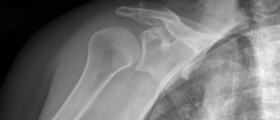
Chronic cervical spondylosis is a very common degenerative condition that affects the cervical spine. Cervical spondylosis is actually a general term that is used to refer to the age-induced wear and tear of the disks in the neck. Degeneration of the joints in the neck becomes increasingly more common as people age. About 85% of all people over the age of 60 are affected with this chronic condition. Cervical spondylosis is often simply referred to as a neck pain, since it emerges from degeneration of the bones of the neck and gradually developing arthritis of the neck region. Cervical spondylosis is most common in people older than age 55, and often characterized by pain, stiffness and muscle spasms.
Causes of chronic cervical spondylosis
In young people, disks in the neck have high water content; they are well lubricated and more flexible than in adults. As people age, the disks begin to dry out, and they gradually become weaker. In the course of this process, the disk spaces are becoming thinner and the facet joints experience increased pressure. Degeneration of the disks results from the combination of these factors, when the cartilage that covers and protects the joints wears away. The bones then start rubbing one onto another while, the body responds to this process by growing new bone in facet joints. This bone overgrowth narrows the space for the nerves and increases the pressure in neck area.
Signs and symptoms of chronic cervical spondylosis
Cervical spondylosis causes severe neck pain and stiffness, often obstructing one’s normal daily activities. More severe symptoms are observed in patients in whom the nerve compression is also present. Symptoms of chronic cervical spondylosis usually include pain in the area of shoulders, arms or chest, tingling sensation in arms, hands or lower limbs, numbness in the limbs, arms, legs or feet, general lack of coordination, abnormal reflexes, difficulty walking, and even loss of bladder or bowel control.
Treatment for chronic cervical spondylosis
Treatment for chronic cervical spondylosis is generally aimed to relieve the pain and other symptoms associated with this degenerative disease. It is possible not to receive any treatment whatsoever and still experience decrease or stabilization of the symptoms. Treatment is usually administered in mild and severe cases of cervical spondylosis and includes wearing a neck brace, taking OTC pain relievers, doing exercises and applying heat or ice to relieve pain. Surgery is usually administered only if all nonsurgical treatments fail and signs and symptoms continue getting worse.


-Causes,-Symptoms,-Diagnosis,-Treatment_f_280x120.jpg)












-Symptoms,-Diagnosis,-Treatment_f_280x120.jpg)

Your thoughts on this
Loading...